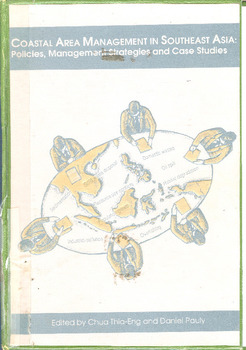Coastal area management in Southeast Asia: policies, management strategies and case studies

Citation
Chua, T.E.; Pauly, D. (eds.). (1989). Coastal area management in Southeast Asia: policies, management strategies and case studies. ICLARM Conf. Proc. (19): 254 p.
The coastal waters of Southeast Asian countries have some of the world's richest ecosystems characterized by extensive coral reefs and mangrove forests. Blessed with warm tropical climate and high rainfall, these waters are further enriched with nutrients from land which enable them to support a wide diversity of marine life. Because economic benefits could be derived from them, the coastal zones in these countries teem with human settlements. Over 70% of the population in the region lives in coastal areas which are characterized by high-level resource exploitation brought about by increasing population pressure and associated economic activities over the last two decades. Large-scale destruction of the region's valuable resources has caused serious degradation of the environment, thus affecting the economic condition and quality of life of the coastal inhabitants. This lamentable situation is mainly the result of ineffective or poor management of the coastal resources. This proceedings contains papers presented at The Policy Workshop on Coastal Area Management held in Johore Bahru, Malaysia, on 25-27 October 1988, was organized with the purpose of improving the dialogue among policy and decisionmakers, scientists and coastal planners so that they can better understand integrated Coastal Resources Management.
Permalink